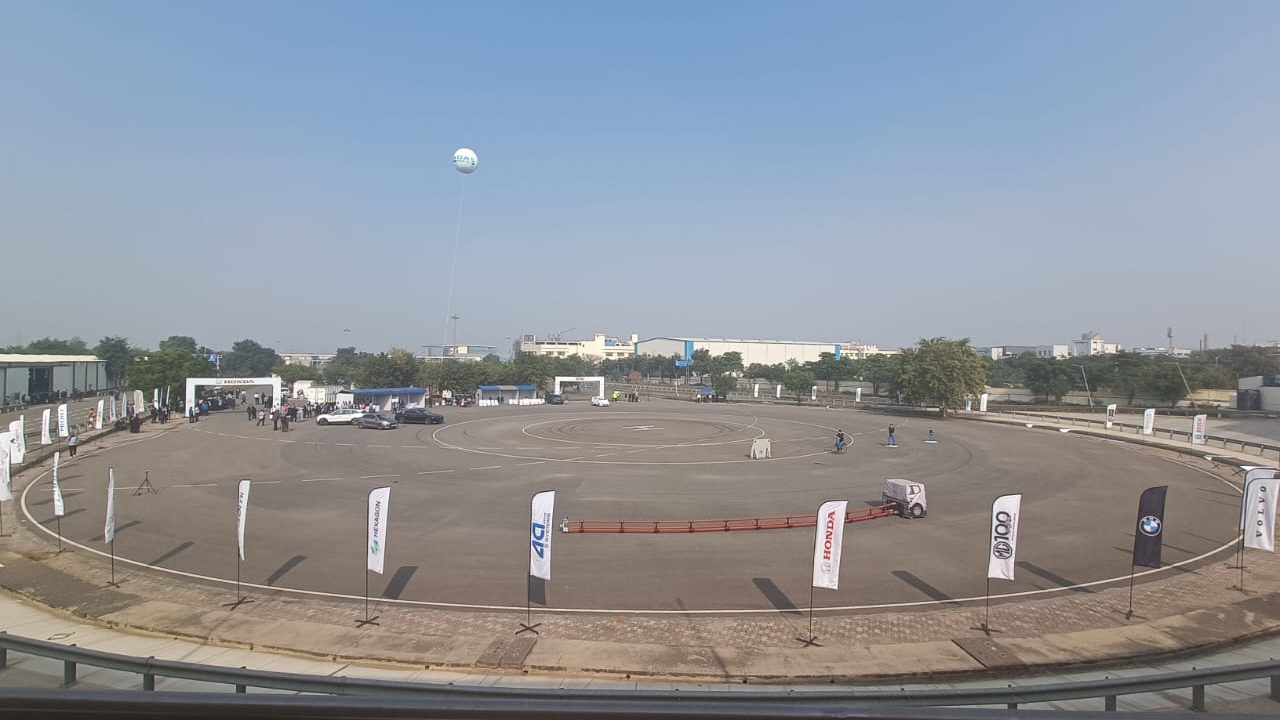ADAS, short for Advanced Driver Assistance Systems is a fairly new term for Indian car buyers. It essentially means a suite of advanced safety features driven by technologies like artificial intelligence (AI). While the concept of safety in vehicles is nothing new, it is now that the stakeholders are emphasising heavily on active safety mechanisms, and accelerating adoption of ADAS is a part of this agenda.
ADAS is an evolving technology and can be classified into five levels. In India, it is still at a nascent stage with some auto companies offering Level 1 and Level 2 features such as Adaptive Cruise Control (ACC), autonomous emergency braking, lane-keep assist (LKA), blind spot detection, and lane departure warning, to name some. The auto industry is working towards advancing to further levels on the back of a robust ecosystem constituted by OEMS, auto-tech firms, component suppliers, testing equipment providers and the government. However, the road ahead is a long one.
The ADAS Show 2023 held at iCAT

To create awareness about ADAS and to bring the stakeholders under one roof, a one-day conclave and expo was hosted at the International Centre for Automotive Technology (iCAT) in Gurugram on Thursday under the aegis of the Ministry of Heavy Industries. The expo showcased the best of the ADAS ecosystem and brought together the best minds behind the technology. Auto-tech firms partnered with OEMs like BMW, MG Motor, Toyota, Honda and Tata Motors to demonstrate some ADAS features on the iCAT test track for the live audience.
Why do we need ADAS?
Road accident is a leading cause of death in India – a country which has the third largest road network in the world. Safety on roads and in vehicles is of paramount importance and ADAS is touted to play a crucial role in this. According to data, human error is the main cause of road fatalities and technology is the key solution to counter this obstacle.
The customer today is quite tech-savvy and understands the importance of a connected and safe vehicle. Moreover, the ever-growing population and increasing number of cars on the roads require a tech solution that eases issues related to parking and traffic congestion.
Shedding light on the importance of ADAS at the conclave, Dr. Hanif Qureshi, Joint Secretary, Ministry of Heavy Industries, said, “ADAS holds immense promise in addressing several key challenges being faced in the auto industry, and one of them is enhanced road safety. It can also help in traffic and congestion management… and enable vehicle-to-vehicle communication by connected technology.”
Besides safety and parking, some ADAS features like adaptive cruise control make driving fatigue-free and pleasurable, noted Kunal Behl, Vice President, Marketing and Sales, Honda Cars India. “It is still at an emerging stage and is the future of the Indian auto industry,” he said during a panel discussion. He added that once in full-fledged use, ADAS could even provide monetary benefits to customers in terms of reduction in insurance premium. “When your vehicle is less prone to accidents, the insurer will charge less premium for your insurance,” he explained.

What are the challenges with ADAS?
The road to full-fledged ADAS adoption is a long one and full of challenges such as infrastructure limitations, affordability concerns, and the need for localised solutions tailored to Indian road conditions. For ADAS features to work effectively, there needs to be a supporting road infrastructure with proper lane markings. Further, low-light or inclement weather conditions can pose a challenge for radars and cameras to capture images and send back alerts. “While ADAS Level 2 is already being offered by OEMs in India, it will take some time for Level 3 to come in. The government is working on developing infrastructure and testing facilities to facilitate it,” said Dr. Qureshi.
Another major challenge constricting mass adoption of ADAS-loaded vehicles is affordability. India is a highly price sensitive market while ADAS features are currently limited to luxury cars or top-spec trims of mass-market cars. This makes it less accessible to entry-level and mid-level customers. “To bring ADAS to entry-level cars, we need to achieve scale and higher levels of localisation,” Jayakumar G, Group President & MD, Valeo, said.
When asked about the concern of affordability encircling the scope of ADAS in India, Saurabh Dalela, Director – iCAT, circled back to the era when air conditioner was a new trend in the auto market. “Most of the population at that time was not ready to pay that extra money but today, there is no car without an air conditioner,” he said. “(ADAS) is an expensive technology – full of instrumentation. But once things begin to get into economy of scale, it will become cheaper and gradually affordable for all,” he explained.
Yet another problem is the level of awareness about proper usage of ADAS features among Indian consumers – it is not sufficient. Many buyers do not know the correct application of the features while some even believe that they can reach “Tesla level autonomy” in their cars with the current ADAS offerings. This leads to misguided use of this system, making it more hazardous than safe. The solution that Honda’s Behl offered for this obstacle is to educate customers at ground level.
What is the way forward with ADAS?
The ever-evolving technology is making advancements – in leaps and bounds. With supportive government regulations, standard testing guidelines, increased awareness, localisation, infrastructure development and a cohesive ecosystem, ADAS has great scope and potential to contribute to the auto industry significantly.



